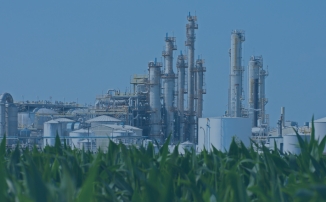
Exclusion criteria
The Biocidal Products Regulation (BPR) requires the active substance (AS) of the product to be evaluated during the approval phase. If it meets certain criteria, it may be substituted or excluded.
The evaluation criteria firstly include exclusion criteria for all AS:
- Carcinogenic, mutagenic and toxic for reproduction (CMR) 1A or 1B substances according to the CLP regulation
- Endocrine disruptors
- Persistent, Bioaccumulative and Toxic Substances (PBTs)
- Very persistent and very bioaccumulative substances (vPvB)
An active substance not approved for a product type is therefore excluded. Articles which have been treated or which contained a biocidal product incorporating the AS may no longer be placed on the market until 180 days after the decision.
However, a derogation is possible as stipulated in Article 5(2) of the BPR:
- If the risk of exposure of humans, animals or the environment to the AS in a biocidal product is negligible. In particular when the biocidal product is used in closed systems or under conditions without human contact or release into the environment.
- If it can be demonstrated that the AS is essential to prevent or control a hazard to human or animal health or the environment.
- Or if not approving the AS would have a disproportionately negative impact on society in relation to the risk to human or animal health or the environment from the use of the substance.
In order to decide whether or not the AS can be approved, a public consultation is held to gather information on compliance with the conditions for exemption. The following information will be made public:
- Identity of the substance (name and EC/CAS)
- Type of product
- The competent assessment authority
- A description of the applicant's representative uses
- Information on the exclusion criteria incurred by the SA
- As well as all the information provided by stakeholders
It is essential that stakeholders (manufacturers, users, the sector concerned, authorities, etc.) contribute to the public consultation in order to collect information for decision-making, such as the existence of possible alternative substances. The European Commission together with the Member States will take into consideration the information collected to decide whether to approve the AS or exclude it.
Substitution criteria
If, during the approval process of an AS, the evaluating competent authority identifies an active substance for which substitution can be considered, it will record this in the conclusion of its evaluation. ASs that are considered for substitution may not be approved for at least 7 years.
The substance is eligible for substitution if it meets at least one of these criteria :
- It is a respiratory allergen.
- Its toxicological reference values are significantly lower than those of most AS approved for the same type of product and use.
- It meets two of the criteria for being considered a PBT substance.
- It is a source of danger to human and animal health and the environment, even with very restrictive risk management measures.
- It contains a significant amount of non-active isomers or impurities.
During the evaluation of a biocidal product containing candidate AS for substitution, a comparative evaluation will be carried out to see whether less harmful products can be considered for the same use. Products containing this AS will only be authorised if no alternative is available.
The aim of this method is to identify substances of particular concern for public health or the environment and to ensure that they are removed and replaced by alternatives.
Approval according to the Biocides Regulation
The Biocidal Products Regulation (BPR) concerns the placing on the market and use of biocidal products, which are used to protect humans, animals, materials or articles against harmful organisms through the action of active substances contained in the product.
The placing on the market of a biocidal product involves two steps:
- The active substance (AS) is first evaluated and then normally approved for a product type (TP).
- Then, each biocidal product containing or generating the approved substance requires a marketing authorisation.
The approval of the active substance has a maximum duration of 10 years, but can be renewed. The supplier of the AS must therefore share all toxicological and ecotoxicological studies carried out on the substance. ECHA thus identifies the suppliers authorised to sell the AS.
To help you prevent these cases, EcoMundo can assist you in the compliance of all your biocidal products, whether you are a manufacturer of active substances or a formulator and distributor of biocidal products.
Wish to know more about biocidal products?

For more information, do not hesitate to contact Cornelia Garaudel or one of our experts !
Exclusion criteria
The Biocidal Products Regulation (BPR) requires the active substance (AS) of the product to be evaluated during the approval phase. If it meets certain criteria, it may be substituted or excluded.
The evaluation criteria firstly include exclusion criteria for all AS:
- Carcinogenic, mutagenic and toxic for reproduction (CMR) 1A or 1B substances according to the CLP regulation
- Endocrine disruptors
- Persistent, Bioaccumulative and Toxic Substances (PBTs)
- Very persistent and very bioaccumulative substances (vPvB)
An active substance not approved for a product type is therefore excluded. Articles which have been treated or which contained a biocidal product incorporating the AS may no longer be placed on the market until 180 days after the decision.
However, a derogation is possible as stipulated in Article 5(2) of the BPR:
- If the risk of exposure of humans, animals or the environment to the AS in a biocidal product is negligible. In particular when the biocidal product is used in closed systems or under conditions without human contact or release into the environment.
- If it can be demonstrated that the AS is essential to prevent or control a hazard to human or animal health or the environment.
- Or if not approving the AS would have a disproportionately negative impact on society in relation to the risk to human or animal health or the environment from the use of the substance.
In order to decide whether or not the AS can be approved, a public consultation is held to gather information on compliance with the conditions for exemption. The following information will be made public:
- Identity of the substance (name and EC/CAS)
- Type of product
- The competent assessment authority
- A description of the applicant's representative uses
- Information on the exclusion criteria incurred by the SA
- As well as all the information provided by stakeholders
It is essential that stakeholders (manufacturers, users, the sector concerned, authorities, etc.) contribute to the public consultation in order to collect information for decision-making, such as the existence of possible alternative substances. The European Commission together with the Member States will take into consideration the information collected to decide whether to approve the AS or exclude it.
Substitution criteria
If, during the approval process of an AS, the evaluating competent authority identifies an active substance for which substitution can be considered, it will record this in the conclusion of its evaluation. ASs that are considered for substitution may not be approved for at least 7 years.
The substance is eligible for substitution if it meets at least one of these criteria :
- It is a respiratory allergen.
- Its toxicological reference values are significantly lower than those of most AS approved for the same type of product and use.
- It meets two of the criteria for being considered a PBT substance.
- It is a source of danger to human and animal health and the environment, even with very restrictive risk management measures.
- It contains a significant amount of non-active isomers or impurities.
During the evaluation of a biocidal product containing candidate AS for substitution, a comparative evaluation will be carried out to see whether less harmful products can be considered for the same use. Products containing this AS will only be authorised if no alternative is available.
The aim of this method is to identify substances of particular concern for public health or the environment and to ensure that they are removed and replaced by alternatives.
Approval according to the Biocides Regulation
The Biocidal Products Regulation (BPR) concerns the placing on the market and use of biocidal products, which are used to protect humans, animals, materials or articles against harmful organisms through the action of active substances contained in the product.
The placing on the market of a biocidal product involves two steps:
- The active substance (AS) is first evaluated and then normally approved for a product type (TP).
- Then, each biocidal product containing or generating the approved substance requires a marketing authorisation.
The approval of the active substance has a maximum duration of 10 years, but can be renewed. The supplier of the AS must therefore share all toxicological and ecotoxicological studies carried out on the substance. ECHA thus identifies the suppliers authorised to sell the AS.
To help you prevent these cases, EcoMundo can assist you in the compliance of all your biocidal products, whether you are a manufacturer of active substances or a formulator and distributor of biocidal products.
Wish to know more about biocidal products?

For more information, do not hesitate to contact Cornelia Garaudel or one of our experts !







